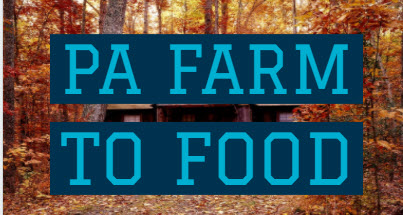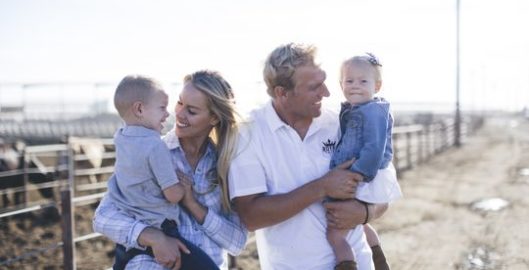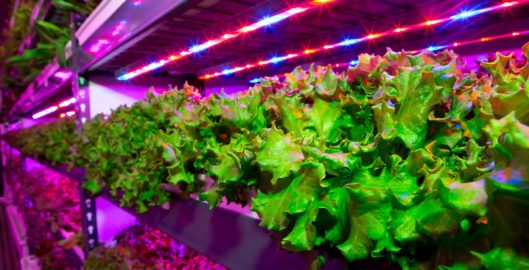GMO’s and The Environment
Farm to Food Gene Editing: The Future of Agriculture
On 25, Apr 2019 | In Blog, Featured, GMO’s and The Environment | By admin
Curious about what gene editing is? Watch this video to learn how CRISPR is helping farmers grow better crops to feed our growing population.
USA Today: Earth Day for a dairy farmer: Thinking decades down the line
On 23, Apr 2019 | In Blog, Featured, GMO’s and The Environment | By admin
What U.S. dairy farmers of today are doing to preserve our environment
I’ve had the honor of working with dairy farmers for years, and a lot of what you think about them is true. They’re modest. They’re connected to the earth. And they work incredibly hard. Every day, they’re up before dawn, working 12 and 14-hour days, whether it’s 90 degrees out or 50 degrees below zero.
They choose this hard work because they believe in the importance of providing nutritious, great-tasting food, like the milk in your child’s glass or the slice of cheese on her favorite sandwich.
Boston Globe: 3 policies for the future
On 26, Nov 2018 | In Blog, Featured, GMO Labeling, GMO’s and The Environment | By admin
Food is going high-tech — policy needs to catch up with it
BY THE BOSTON GLOBE EDITORIAL BOARD
or generations newspaper editorials have been the “eat your spinach” part of the operation. But what if that spinach can now be organic baby spinach, or hydroponically grown? What if we can eat it year round — and from just around the corner?
With a warming planet, the need for high-tech food and high-tech food policies is undeniable. Both are going to play an increasingly vital role in the planet’s future — and the way we eat. Here are a few ways to use science to steer food into a more sustainable path.
Learn to love GMOs, and resist efforts to demonize or prohibit them. Genetically modified food sets off alarm bells for purists, but crops designed to last longer or resist disease are increasingly necessary.
The good news is that new federal labeling regulations, which could become final by Dec. 1, will preclude the kind of state-by-state labeling regulations that Vermont had already indulged in and that Massachusetts has been perpetually on the cusp of enacting.
The even better news is that the science of food — of producing fruits with a longer shelf life, wheat that requires less water or fertilizer — is advancing so fast that even the foodie fearmongers can’t keep up.
First on the federal role: While moving at a glacial pace, the US Department of Agriculture has at long last brought forth a final set of regulations designed to implement a law passed by Congress in 2016 to deal with standards for disclosing bioengineered ingredients. Not surprisingly the new regs generated a huge amount of controversy — more than 14,000 comments received by the agency during the public comment period.
Assuming the regs are indeed finalized Dec. 1, they won’t go into effect until Jan. 1, 2020. What consumers are likely to notice is that GMO labeling will become “BE food,” or “bioengineered food.” And since at least two-thirds of all foods sold in the US contain some ingredients in that category — consumers are indeed likely to see it everywhere.
What it will accomplish is to prevent every state and locality from drafting its own labeling laws and, in the process, making the free movement of good products from state to state difficult if not impossible. And it will let innovation continue unhindered.
The future of seafood in the United States is aquaculture. Even the king of seafood, Roger Berkowitz, acknowledges that. “The technology has gotten so good with submersible pens,” said Berkowitz, chief executive of the Legal Sea Foods empire. “It’s a game changer.”
Berkowitz is particularly excited about the prospect of fish farms in federal open waters. Aquaculture in Massachusetts is largely confined to shallow waters; think oyster beds on Cape Cod. Of course, this country for years has talked about offshore fish farming, but the time has come, with wild fish stocks dwindling. In 2017, the US imported a record amount of seafood, more than 6 billion pounds, and exported only about 3.6 billion pounds.
While Massachusetts and some municipalities have regulated aquaculture, what’s needed now is a federal regulatory framework to support aquaculture in the ocean. It hasn’t been easy navigating the concerns of environmentalists, fishermen worried about their own livelihoods, and ships attached to particular routes. The ocean may be big, but surprisingly not big enough to accommodate everyone’s needs.
Congress can play a big role: Get a bill that everyone likes. Here’s another thought: How about supporting aquaculture as part of the farm bill, something US Representative Seth Moulton would like to see. With Democrats taking back the majority in the House, maybe this could get done next year.
Clear federal policies could enable the prospect of fish farming using the infrastructure of offshore wind turbines. Without such policies, the future of fish farming will remain murky, because these operations are expensive and investors don’t like uncertainty.
“No one would spend a dime on that,” said Peter Shelley, senior counsel at the Conservation Law Foundation, which has been closely following the development of aquaculture in the ocean. “It makes Cape Wind look like a sure bet.”
Assume change. Farm and food policies tend to deal with what we eat and grow now, but climate change should end that way of thinking. The government and industry need to anticipate disruption, and be ready to adapt, rather than pour money into trying to preserve vanishing industries that can’t be sustained any longer.
Rising temperature of oceans, for example, have forced the cod and lobsters to flee north to colder waters. We lament the loss of cod in Massachusetts, but Southern fish species are flocking to us now. In other words, we need to get used to “Cape Mahi-Mahi.”
Warmer temperatures in New England could extend the growing season for blueberries, strawberries, peaches, and corn. That could be a silver lining for consumers and farmers’ markets.
Food policy is often inherently conservative: organic food fans and proponents of farm subsidies want different versions of the same thing, which is to cling to the way food’s always been. But food is going to change whether we like it or not — and our food policies should try to direct those changes, not stop them.
http://apps.bostonglobe.com/ideas/graphics/2018/11/the-next-bite/the-supply-chain-editorial/
5 Things To Know About GMOs This World Environment Day
On 07, Jun 2017 | In Blog, Featured, GMO’s and The Environment | By admin
GMO Answers
GMOs feeding a growing world
On 08, Dec 2014 | In Featured, GMO’s and The Environment, Seed Treatments | By admin
In a recent letter to the editor, (“Time to seek out non-GMO foods, Nov. 19) the author states: “The implementation of genetically modified organisms cannot be a permanent solution.”
Nothing could be further from the truth. Genetic modification of crops is critical to providing for the expansive food needs of people around the globe, now and in the future.
Today, the same philosophy of growing the highest quality, most successful crops continues with the added benefit of modern technology. Modifying plants to grow in our changing environment and challenging weather conditions is how we will be able to sustain the food needs of the exploding world population that’s estimated grow from the current 7 billion people to over 9 billion by 2050.
Genetically modified foods are nutritionally equal and safe, some even having more nutritional benefits. As both an agriculture student at Delaware Valley College and a leader in the Manor FFA chapter, I have spent many hours talking about and researching GMOs and can tell you that the food being produced today is no different than the food of 50 years ago.
Thousands of studies here in the U.S. and across the globe have found that GMOs pose no risk to human health.
What is a risk, however, is misinformation that clouds the reality of the need for and the positive effects on the environment, economy and food production that GMO crops provide.
Kaleb Long
Manor Township
03
Oct
2014
In Featured
GMO’s and The Environment
Seed Treatments
Weed Management and Pesticides
By admin
Penn State Professor: GMO Crops Benefit People, Farmers, Environment
On 03, Oct 2014 | In Featured, GMO’s and The Environment, Seed Treatments, Weed Management and Pesticides | By admin
The Real Truth about GMOs
Jul 25, 2013 |By Nina Fedoroff
The World Food Prize laureates for 2013 were announced in June. They are Marc van Montagu, Mary-Dell Chilton and Rob Fraley. These scientists played seminal roles, together with the late Jeff Schell, in developing modern plant molecular modification techniques. Fraley is chief technology officer of Monsanto. Chilton is a Distinguished Science Fellow at Syngenta. Montagu founded Plant Genetic Systems (now part of Bayer CropScience) and CropDesign (today owned by BASF).
Scratch the blogosphere and you’ll be dumbfounded by this award. GMOs (genetically modified organisms) produced by big ag-biotech companies are responsible for farmer suicides in India. Monsanto sues farmers who didn’t plant biotech seeds, but had a bit of pollen blown into their fields. U.S. wheat farmers are facing bankruptcy because GM wheat was discovered growing in Oregon. A quick search on YouTube turns up these top hits: “Seeds of death: unveiling the lies of GMOs,” “Horrific new studies in GMOs, you’re eating this stuff!!” and “They are killing us—GMO foods.”
Humans began genetically modifying plants to provide food more than 10,000 years ago. For the past hundred years or so plant breeders have used radiation and chemicals to speed up the production of genetic changes. This was a genetic shotgun, producing lots of bad changes and a very, very occasional good one. That’s the best we could do until the three laureates (and their colleagues) developed molecular techniques for plant genetic modification. We can now use these methods to make precise improvements by adding just a gene (or two or a few) that codes for proteins whose function we know with precision. Yet plants modified by these techniques, the best and safest we’ve ever invented, are the only ones we now call GM. Almost everyone believes we’ve never fiddled with plant genes before, as if beefsteak tomatoes, elephant garlic and corn were somehow products of unfettered nature.
The anti-GM storm gathered in the mid-80s and swept around the world. Most early alarms about new technologies fade away as research accumulates without turning up evidence of deleterious effects. This should be happening now because scientists have amassed more than three decades of research on GM biosafety, none of which has surfaced credible evidence that modifying plants by molecular techniques is dangerous. Instead, the anti-GM storm has intensified. Scientists have done their best to explain things, but they’re rather staid folk for the most part, constitutionally addicted to facts and figures and not terribly good at crafting emotionally gripping narratives. This puts them at a disadvantage. One scare story based on a bogus study suggesting a bad effect of eating GMOs readily trumps myriad studies that show that GM foods are just like non-GM foods.
What are the facts? Monsanto and the other big ag-biotech companies have developed reliable, biologically insect-resistant and herbicide-tolerant commodity crops that benefit people, farmers and the environment, and are nutritionally identical to their non-GM counterparts.
GM insect-resistant crops contain a gene that codes for a bacterial protein that’s toxic to an insect pest, but not animals or people. Insecticides are toxic chemicals that kill insects indiscriminately, both harmful and beneficial. They’re also poisonous to other animals—people included. Insect-resistant crops have reduced insecticide use. Biological solutions for insect pest problems were Rachel Carson’s dream.
Insect-resistant GM corn also decreases human and animal exposure to mycotoxins, highly toxic and carcinogenic compounds made by fungi. The fungi that produce mycotoxins follow insects into plants; insect-resistant plants have no insect holes for fungi to enter and therefore no mycotoxins.
Monsanto developed GM crops that tolerate a nontoxic herbicide called glyphosate, aka Roundup. Herbicide-tolerant crops have made a major contribution to decreasing topsoil loss by facilitating no-till farming. This farming method reduces CO2 emissions from plowing and improves soil quality.
Farmers don’t have to buy Monsanto seed, nor is anyone preventing them from saving and replanting any seed they want, except for patented seed they’ve signed an agreement not to save and plant. Farmers buy seeds from Monsanto and other ag-biotech companies because their costs decrease and their profits increase. If they didn’t, farmers wouldn’t buy them again.
If the popular mythology about farmer suicides, tumors and toxicity had an ounce of truth to it, these companies would long since have gone out of business. Instead, they’re taking more market share every year. There’s a mismatch between mythology and reality. Maybe it’s worth remembering that technology vilification is about as old as technology itself. What’s new is electronic gossip and the proliferation of organizations that peddle such gossip for a living.
ABOUT THE AUTHOR(S)
Nina Fedoroff is distinguished professor of biosciences at the King Abdullah University of Science and Technology in Saudi Arabia and Evan Pugh professor at Penn State University. She has no material interest in Monsanto or its products.














